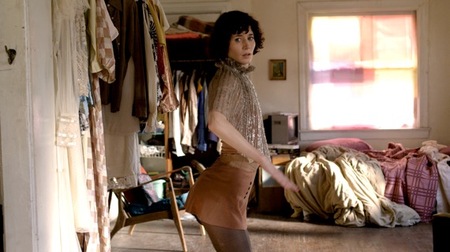
Miranda July as Sophie, who is attempting to make a YouYube dance hit. Image via Roadside Attractions.
I didn’t know I’d go to film for the second post of this performance art column, but here’s a surprise. Miranda July’s The Future. That’s right, a performance within a film within a laptop screen within a film within a performance. In the film, July plays Sophie, an aging dancer who fails to make a viral YouYube dance video. Pause. It’s not that I relish depictions of my generation as hapless dreamers full of delusion and neuroto-narcissism on the verge of a charming nervous breakdown. It’s that part of indie-stream film personae that makes me want to vomit out the Winona (Ryder)-worship of my youth. But July has captured something here about performance, the desire for visibility — albeit a very private, framed sense of it – that is real. July’s use of a laptop, YouTube, and the, “30 Dances in 30 Days,” project she sets up for Sophie situates this character in a familiar trope of contemporary persona-making where the number of online hits determines success. Sophie, however much she tries, cannot allow herself to dance for the camera on her computer screen. Suddenly, something very private, and therefore seemingly easy, becomes the voyeuristic eye that shames her out of her “star” potential.
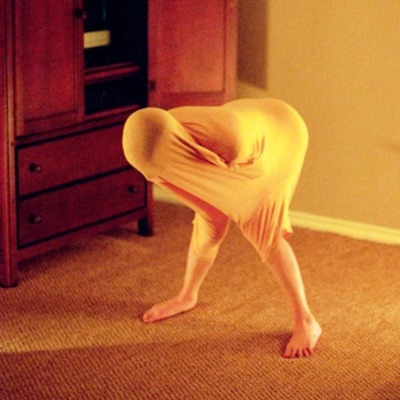
Sophie's epic t-shirt dance, image via Sales on Film
She clings to a worn, yellow shirt that she feels between her fingers over and over again. When she attempts to leave it behind, it floats through the L.A. suburbs to the house where she is living with an older Daddy character. Alone in his bedroom, she folds the shirt over her body and begins to dance. Unlike the self-conscious moves she tries in earlier attempts to dance alone, she jerks about the bedroom to an internal sense of timing that doesn’t match up with the Beach House song playing on her laptop. There is no dialogue here, there’s no interaction, and yet it is an intensely climactic scene. I don’t remember how long the dance lasts, whether it’s the duration of the song or longer, but its cathartic and eerie imagery generates a powerful impact on the viewer, as both a dance and a symbol of time travel, blindness and a dark, shrouded mystery. The Daddy character, once noiselessly peering from the bedroom door, turns away as she rolls across the door frame. Does she see him? Either way, it doesn’t matter. The character, Sophie, is dancing for no one, but Miranda July is dancing for everyone.
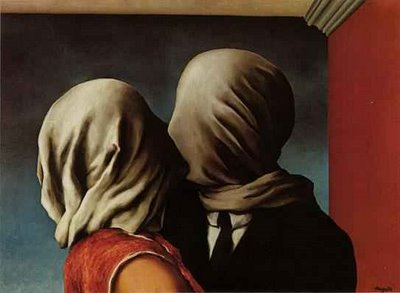
Rene Magritte, "The Lovers II," 1928. Oil on canvas, 54 x 73.4 cm. Image via Art Experts.
This imagery sent a few flashes of recognition through my synapses. One is The Lovers II by Rene Magritte, that iconic work that has found its way on psychology books and museum postcards. A couple kissing with cloth over their faces, the creases of which pucker at the orifices and stretch at the joints. Here, the moment of concealment is the moment of abandon. Its relationship to July’s t-shirt lies not only in this feeling but in the ordinariness of the fabric. Instead of an elaborate costume to conceal the body, she has chosen this almost dingy yellow shirt (I’ll leave aside analysis of the color yellow in the history of painting). Magritte paints the cloth as is, without any psychedelic accoutrement, like his Surrealist peers.
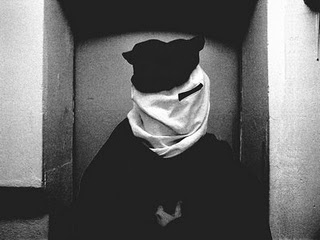
John Hurt as a cloaked John Merrick. Image via ICA, London.
I thought again of shame and spectacle, how that which we seek to hide can become the irresistible force that bears more power on our lives than the personae we put forth. This brought me to another film, David Lynch’s Elephant Man (1980), where Jon Hurt plays the persecuted-circus-freak-turned-bourgeois-object-of–fantasy, John Merrick. Covering and uncovering are instrumental actions in the film, as the Elephant Man’s visage is hidden by cloth or shadowed by hospital screens. Merrick’s turn of visibility to doctors and their wives, in the medical theater, at the opera, and at dinner, is at first exploratory and then tragic as the world is unable to truly accept him. Like Magritte’s The Lovers, the image of Merrick with the cloth on his face is both seductive and foreboding. There is a sense that he is endlessly covered. The cloth stands in for a persona on which the public’s fantasies are projected. The cloth in painting is also a surface for projection, of love, desire and the blindness with which we act on these ideas.
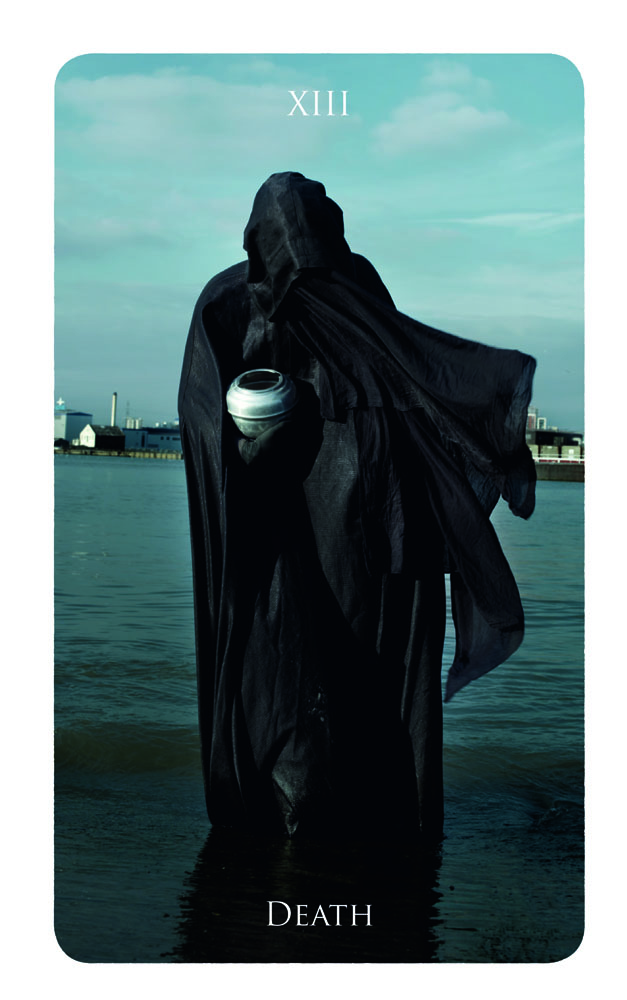
Raimund Hogue as Death in Manuel Vason's tarot deck. Courtesy the artist.
The final reference that came to mind on the performance of the cloaked and concealed is a tarot card made by renown performance art photographer, Manuel Vason. Vason created a deck of tarot cards with the images of seminal performers. The Death card pictured here, is of a cloaked Raimund Hogue, former dramaturg for Pina Bausch and influential choreographer in his own right. He, like July, is performing as a type of character (if “Death” can be as such), and is completely enveloped by a ragged, black covering. He waits with an empty urn in his hand, standing at the edge of the river, Styx. This isn’t to say that July’s blind dance bears as directly on the archetype as Hogue’s, but it equally draws in the viewer while offering nothing of a look back.

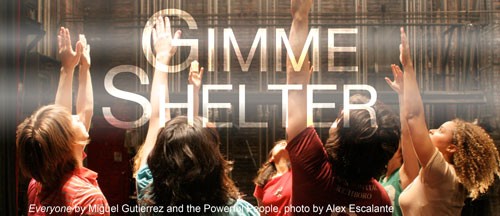



Pingback: Gimme Shelter | The Rush of Fall Part 1: Archive of a Deluge | Art21 Blog
Pingback: Gimme Shelter | The Rush of Fall Part 1: Archive of a Deluge | Uber Patrol - The Definitive Cool Guide